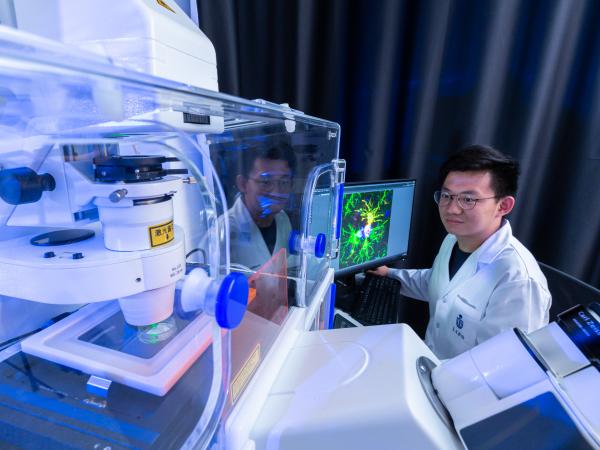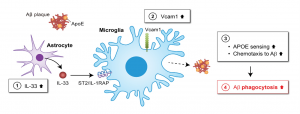
HKUST President Prof. Nancy IP (center, front row), Research Professor Prof. Amy FU (second right, front row), a co-first author of this research paper Mr. WU Wei (second left, front row), and Research Assistant Professor Prof. WONG Hiu Yi (first left, front row) with other members of the HKUST Division of Life Science research team.

Dr. LAU Shun-Fat, a co-first author of this research paper and former Postdoctoral Fellow at HKUST Division of Life Science, is now a Postdoctoral Associate at the Yale University School of Medicine.

The diagram illustrates the VCAM1-APOE signalling pathway as a potential therapeutic target for Alzheimer’s disease. Interleukin-33 (IL-33) (1) increases VCAM1 expression in microglia (2), which stimulates the attraction of microglia to APOE-associated amyloid-β (Aβ) deposition (3), leading to the clearance of Aβ in the brain (4).
Journal Reference:
Shun-Fat Lau, Wei Wu, Hiu Yi Wong, Li Ouyang, Yi Qiao, Jiahui Xu, Jessica Hiu-Yan Lau, Carlton Wong, Yuanbing Jiang, David M Holtzman, Amy K Y Fu, Nancy Y Ip. The VCAM1-ApoE pathway directs microglial chemotaxis and alleviates Alzheimer’s disease pathology.
Nat Aging 2023 Oct;3(10):1219-1236. doi: 10.1038/s43587-023-00491-1.